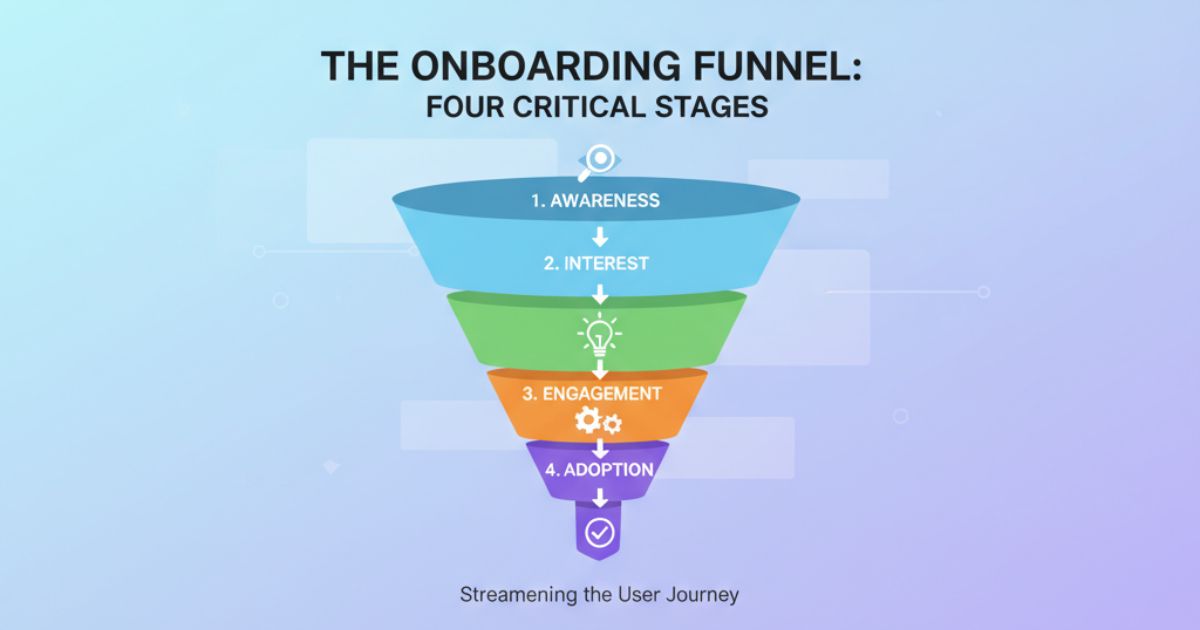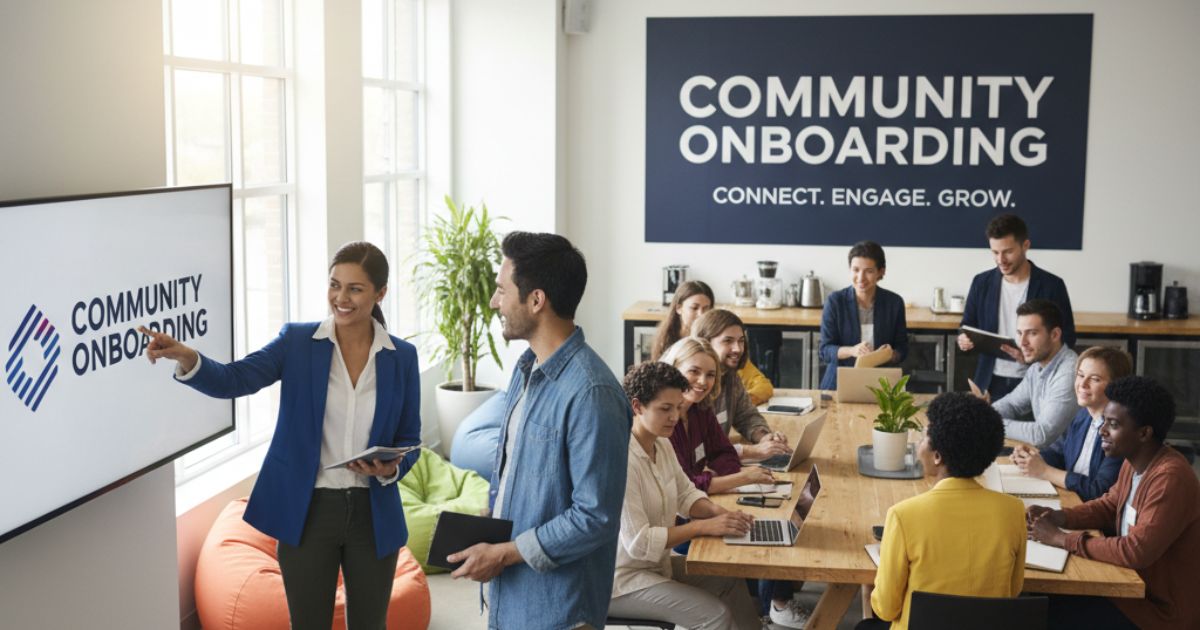Effective community onboarding is the first step to building lasting connections with your members. Whether welcoming users to an online forum, a local group, or a professional network, the initial experience shapes trust, loyalty, and long-term participation. A well-designed new member experience guides people through each stage of the onboarding funnel, boosting member engagement and retention.
In this guide, we’ll cover why community onboarding matters, share proven best practices, highlight helpful tools, and explain how to measure success. By following these strategies, you can transform newcomers into active, committed participants and foster a thriving, engaged community.
What Is Community Onboarding?
Community onboarding refers to the structured process that welcomes new members, familiarizes them with your group’s culture and rules, and motivates them to take that critical first action—whether it’s introducing themselves, completing a profile, or joining a conversation. Think of it like orientation for a new job or club: a successful onboarding journey reduces confusion, accelerates comfort, and sets clear expectations for engagement.
The Onboarding Funnel: Four Critical Stages

Designing your onboarding funnel as a series of intentional stages helps you guide newcomers from passive observers to active participants. The four critical stages are:
- Attraction: Capture attention through targeted messaging, social proof, and enticing value propositions.
- Welcome: Personalize the first touchpoint—automated emails, welcome videos, or one-on-one messages that acknowledge the new member by name.
- Engagement: Encourage an initial action, such as posting a comment, filling out a profile, or attending an introductory event.
- Empowerment: Provide resources, mentorship, and roles that enable members to contribute meaningfully and feel a sense of ownership within the community.
By mapping each touchpoint, you can identify gaps—moments when newcomers drop off—and optimize accordingly.
Best Practices for Effective Onboarding
Adopt these proven strategies to enhance each stage of your onboarding funnel and boost retention rates:
- Personalization at Scale: Use dynamic tokens in messages to address members by name, tailor content based on their interests, or reference how they found your community. Even automated interactions feel warmer when individualized.
- Clear Value Pathways: Articulate what members will gain—knowledge, connections, opportunities—and outline a simple roadmap of next steps. A short “first week checklist” can reduce uncertainty.
- Guided Tours and Tutorials: Interactive walkthroughs highlight key features: profile setup, discussion boards, resource libraries, or event calendars. Embed tooltips or videos that appear when a user first visits a page.
- Community Mentors and Ambassadors: Pair newcomers with veteran members who can answer questions, make introductions, or invite them to group activities. Human connections accelerate trust more than any automated message.
- Gamification Elements: Introduce badges, points, or progress bars to recognize completion of onboarding tasks. Visible milestones spur motivation and reinforce small wins.
- Accessible Documentation: Maintain a well-organized help center, FAQ section, or knowledge base—link to specific articles from welcome messages to address recurring questions.
- Feedback Loops: Solicit feedback immediately after onboarding tasks: Did the welcome email feel friendly? Was the tutorial helpful? Use short, embedded surveys to collect insights in real time.
- Multi-Channel Outreach: Reinforce your welcome sequence via email, in-app notifications, SMS, or even phone calls—depending on the community’s nature. Redundancy ensures newcomers don’t miss critical information.
Tools and Techniques to Streamline Onboarding
Technology can automate repetitive tasks, personalize interactions, and provide data-driven insights. Here are some categories to consider:
- Email Automation Platforms: Services like Mailchimp, Drip, or ConvertKit enable you to build drip campaigns, segment new users, and trigger messages based on user behavior.
- In-App Guidance Software: Tools such as Appcues, WalkMe, or Pendo overlay interactive tours, tooltips, and launchers that guide members through your platform’s interface.
- Community Platforms with Native Onboarding: Solutions like Tribe, Mighty Networks, or Discourse often include welcome modules, profile prompts, and gamification features out of the box.
- Chatbots and AI Assistants: Deploy chatbots on your website or within the community to answer FAQs, route users to resources, or escalate more complex requests to human moderators.
- Webinar and Event Software: Host live orientation sessions with Zoom, Hopin, or Crowdcast. Record these for on-demand viewing and link them in your welcome series.
- Mentorship Management Tools: Platforms like Together or MentorcliQ facilitate mentor pairing, meeting scheduling, and progress tracking to ensure 1:1 support for newbies.
Integrations between these tools ensure data flows smoothly—new signups trigger welcome emails, which track click rates to determine who needs a follow-up message or a personal outreach.
Measuring Onboarding Success

No onboarding strategy is complete without KPIs that reveal how well you’re converting newcomers into active members. Track metrics such as:
- Activation Rate: Percentage of new members who complete at least one core onboarding action (profile completion, first post, event attendance) within X days.
- Time to First Action: Average time between signup and the first meaningful interaction. Shorter times generally predict higher long-term retention.
- Drop-Off Points: Identify stages with high abandonment—do welcome emails go unopened? Are tutorials left incomplete? Pinpoint bottlenecks to refine your flow.
- Early Retention Rate: Percentage of members still active after 7, 14, and 30 days. Strong onboarding often correlates with improved retention curves.
- Feedback Scores: Average satisfaction rating from embedded surveys or NPS for the onboarding experience.
Regularly review these metrics in a dashboard to spot trends, test new approaches, and iterate on your onboarding sequence for continuous improvement.
Conclusion
Community onboarding is the key to a strong and active community. A clear onboarding process helps new members feel welcome and engaged. Personalizing their experience makes them more likely to participate and stay. Utilizing the right tools and tracking success with straightforward metrics can enhance retention and satisfaction. By focusing on onboarding, you can turn first-time visitors into loyal members, active participants, and community advocates. Start improving your onboarding today and see your community grow.
For Further Reading, explore Community Solar Cooperatives





